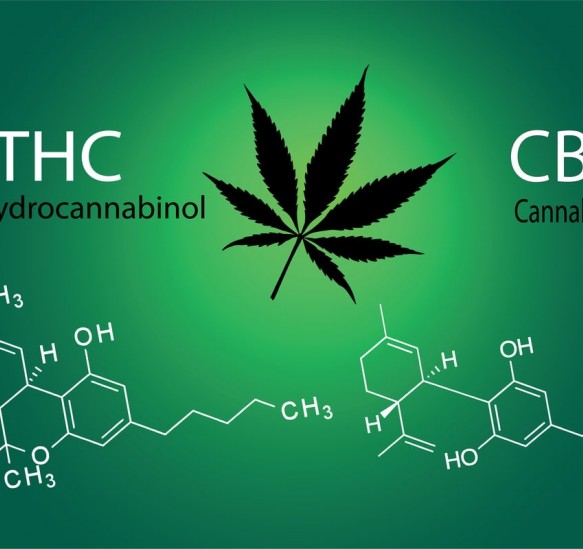However, beyond their effects, CBD and THC also clash in other ways. This study will compare CBD and THC, highlighting their similarities and differences. In addition, it will be very useful to reveal how national and international legislations and institutions deal with CBD and THC.
CBD and THC: What do they have in common?
To study the commonalities between CBD and THC is to determine their common origin and their interaction with the nervous system.
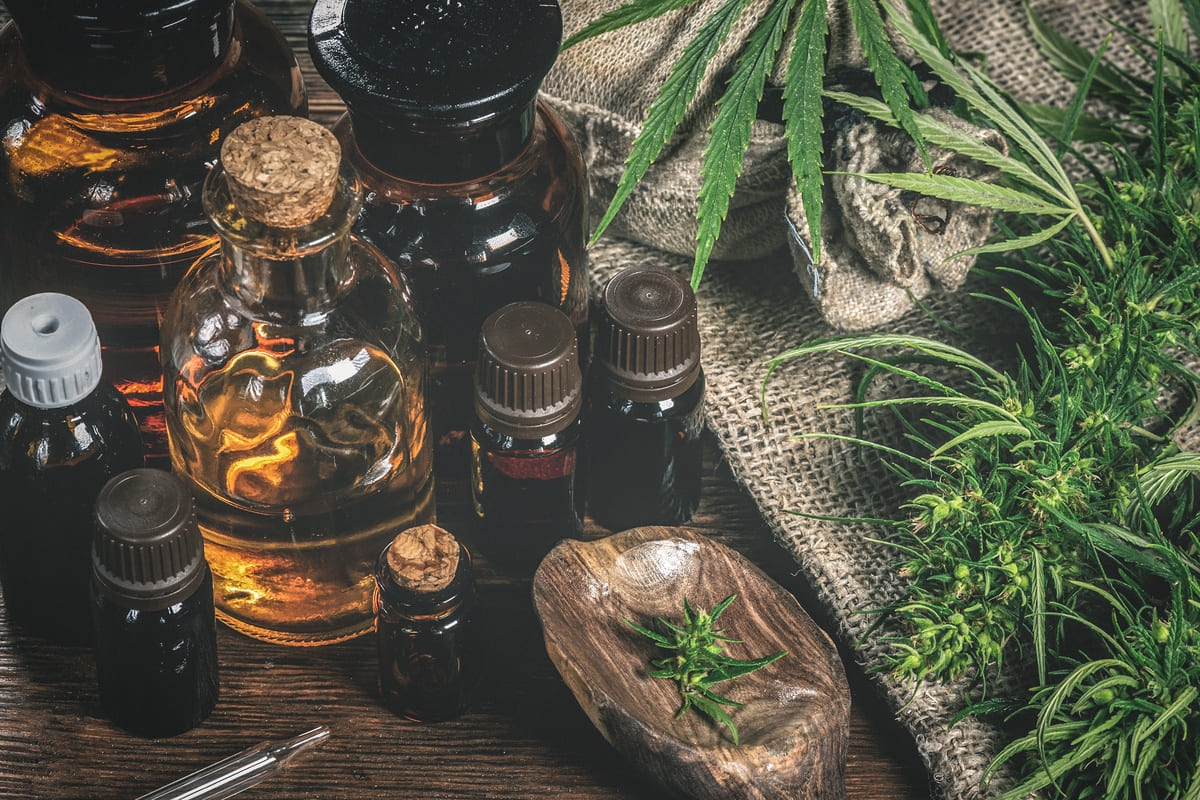
CBD and THC: A common origin
First of all, it should be known that Cannabidiol (CBD) and Tetrahydrocannabinol (THC) both come from the same plant called hemp. They are the two most represented cannabinoids, among the hundred or so other active substances present in the plant[1]. One can mention for example the terpenes[2]. 2] These are classes of hydrocarbons known to be responsible for the smell and taste of different varieties of cannabis. Other examples include flavonoids[3] and CBN.
Cannabis is actually a species of hemp. It is divided into several subspecies, the main ones being sativa, indica and ruderalis, but the CBD and THC levels are not the same. Cannabis sativa is distinguished from the other three by its low THC content. It contains several species of plants with THC levels as low as 0.2%.
The list of plants in this category is limited by a decree of 22 August 1990 in France, article 2. There are 18 varieties, all of which come from the Sativa L variety, such as Carmagnola, Fedora 19, Fibrimon 56 and Santhica 27, etc.
In reality, cannabis plants containing 0.2% THC or less are considered to be hemp, while those with a higher content are considered to be marijuana[4].
The interaction of CBD and THC with the nervous system
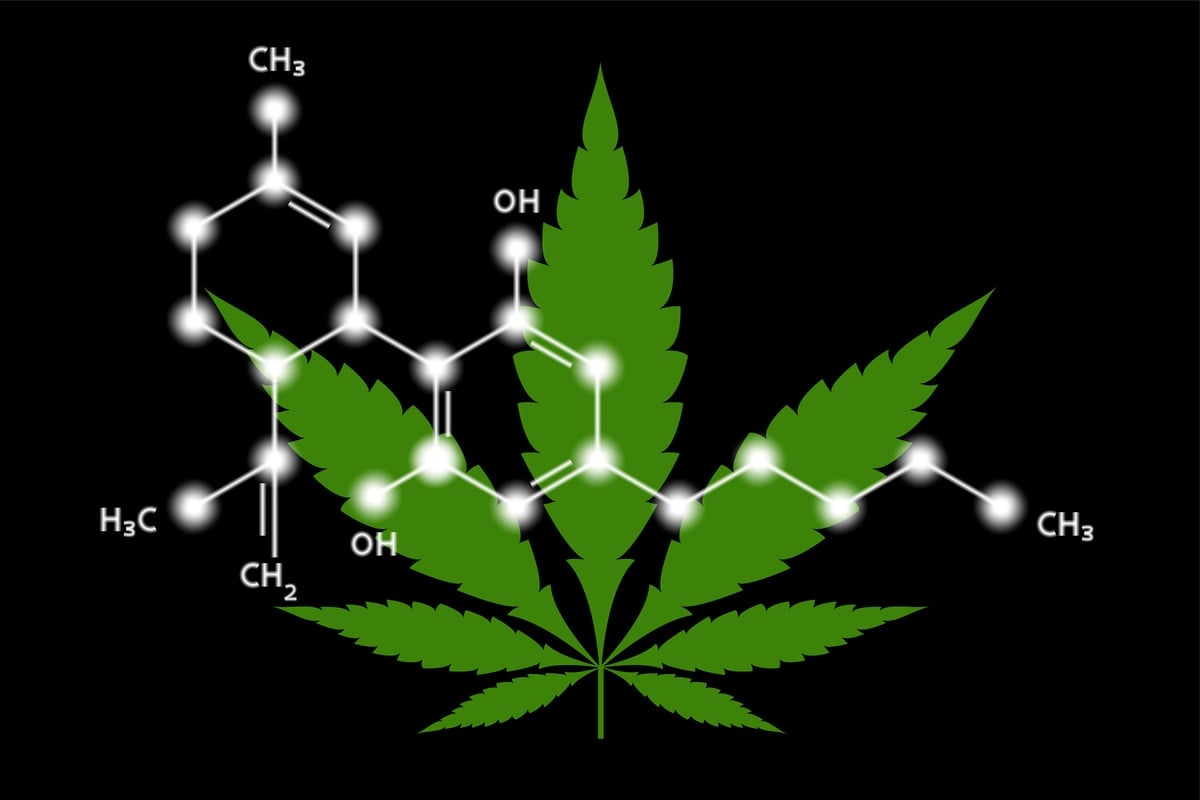
To produce their effects, CBD and THC cannabinoids interact with the nervous system. Cannabinoid is a term that refers to a group of molecules, similar to those found in our bodies, called endocannabinoids. In plants, these molecules are also present and are called phytocannabinoids. Synthetic cannabinoids are compounds that are manufactured in the laboratory.
Cannabinoids interact with a regulatory system in the body called the endocannabinoid system (ECS). This system plays an important role in many physiological processes in our bodies.
After any consumption of cannabis, for example, the effects, whatever their nature, are directly felt through this endocannabinoid system (ECS). The properties of the SEC system are linked to two basic elements: the endocannabinoids produced by the body itself and the receptors called cannabinoid receptors.
Links between CBD and THC: The entourage effect
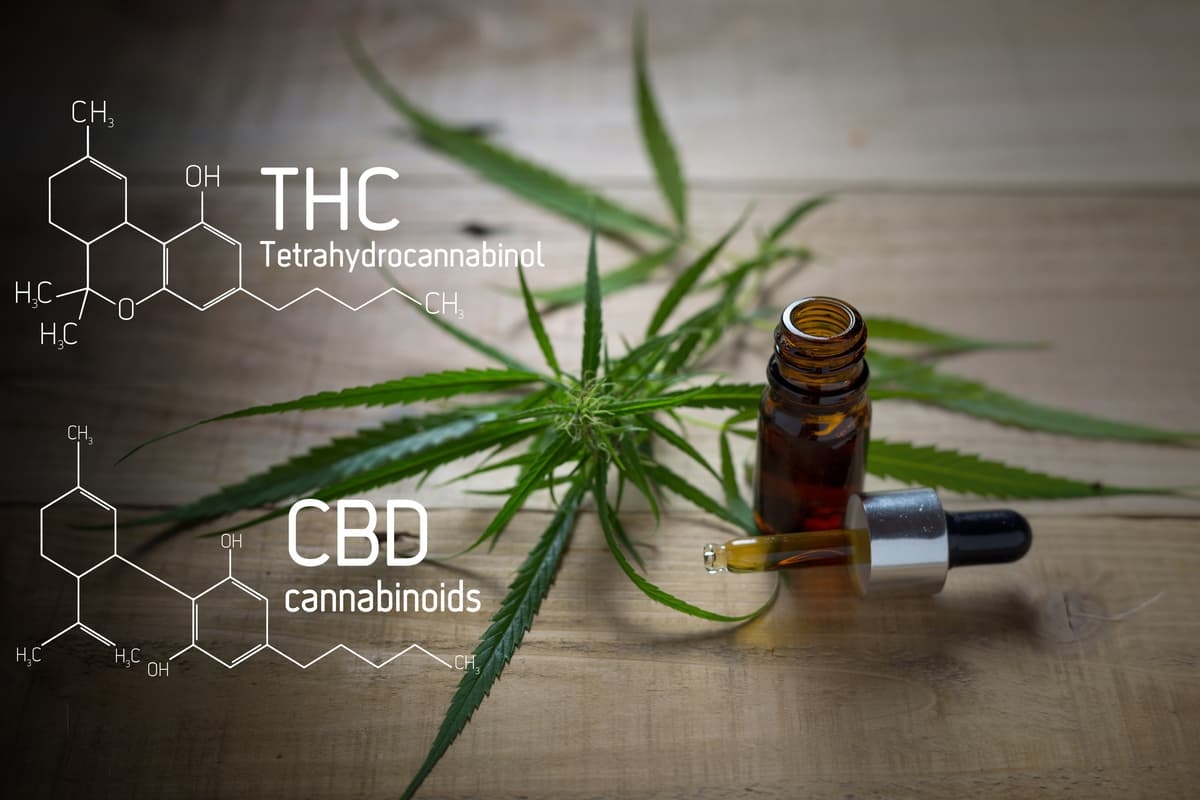
Between CBD and THC cannabinoids, their effects have not always been opposed. They are often referred to as "sister molecules". The science of cannabinoids has revealed a concept that is well known to Anglo-Saxons: "The entourage effect"[7 ].
In the cannabis plant, we said, there are several hundred chemical molecules called cannabinoids The entourage effect is based on the principle that "the union of these cannabinoids is strength. »
The entourage effect is when cannabidiol (CBD) combined with other cannabinoids such as THC or other organic substances (terpenes, flavonoids) produces very pronounced effects.
This entourage effect has been the subject of several studies, the results of which have not yet been refuted. According to these studies[8], consuming whole plant extracts would not only produce different effects but also more effects, compared to a partial consumption of certain pure compounds.
On the other hand, a study conducted by Professor Jeremy R. Johnson and published in the "Journal of pain and symptom management" in 2010, made a relevant remark. In the treatment of certain types of pain, he says, THC or CBD taken in isolation cannot guarantee full effectiveness. In fact, he notes, they are less effective than a single placebo. However, when CBD and THC are combined, it substantially improves the condition of patients.
Better still, in 2011, another study[9] published in the same journal, also demonstrated that "in their natural environment, the different cannabinoids, associated with terpenes and other flavonoids, benefit from a synergy, which does not exist when they are administered in the form of an isolate. Therefore, as this author states, there are pathologies that cannot be treated with a single cannabinoid alone[10].
10] It is in this sense that several publications have appeared. They state that THC alone contains major therapeutic advantages such as analgesic properties. Other publications also reveal that CBD combined with other chemical compounds contained in cannabis, significantly mitigate the toxicity of THC[11].
This entourage effect has also been highlighted by Russo in certain pathologies (depression, anxiety, insomnia, dementia, addiction) whose treatment requires, according to his investigations, the combination of terpenes and other cannabinoids such as CBD and THC. Based on two terpenes (limonene and linalool), he demonstrated that the action of CBD and THC could be more productive if combined with terpenes, in the treatment of these pathologies[12].
Moreover, in the case of pathologies such as dementia in Alzheimer's patients, RUSSO also noted that THC was only effective when associated with three terpenes including limonene, linalool and pinene. In sleep disorders, the observation is also the same, concerning terpenes like linalool, caryophyllene and myrcene. With regard to addiction, the usefulness of the terpenes caryophyllene, myrcene and pinene is also recognized when combined with other cannabinoids[13].
In addition, the entourage effect has been demonstrated in animals. A 2019 study published in the journal Frontiers in Pharmacology, investigated the effects of both cannabinoids on neurohyperactivity models in zebrafish and also concluded their synergy[14].
Composition of drugs for therapeutic use
In several European Union countries, as in North and South America,[15] there has been a real advance in the therapeutic use of cannabis.
Some have even come to legitimize its use for recreational purposes. However, the legislation in France concerning the use or consumption of cannabis is still very cautious at present. Two drugs are prescribed for this purpose[16]: Sativex and Epidiolex.
Sativex is composed in part of THC and is intended for patients suffering from Multiple Sclerosis (MS). Even if it is not sold in France for the moment because of a disagreement on the price between the producer GW Pharma, it must be recognized that it is already available in 18 countries of the European Union.
So we are entitled to ask ourselves this question. Or perhaps we should first remind ourselves of the legislation in force in France and in certain countries of the European Union.
The French legislator has in fact literally banned the marketing or consumption of cannabis with the presence of THC, even if in small quantities. In England, too, the legal level of THC presence is set at 2%[17].
In short, one wonders why the various legislators, while regulating the use of THC at best or prohibiting it at worst, allow cannabis-based medicines with THC contents well above the legal threshold in force?
The answer is easy to guess. The reason is the entourage effect. The desired effect in the development of various cannabis-based medicines would certainly not be achieved.
What about the fundamental differences between CBD and THC?
CBD, THC: What makes them different
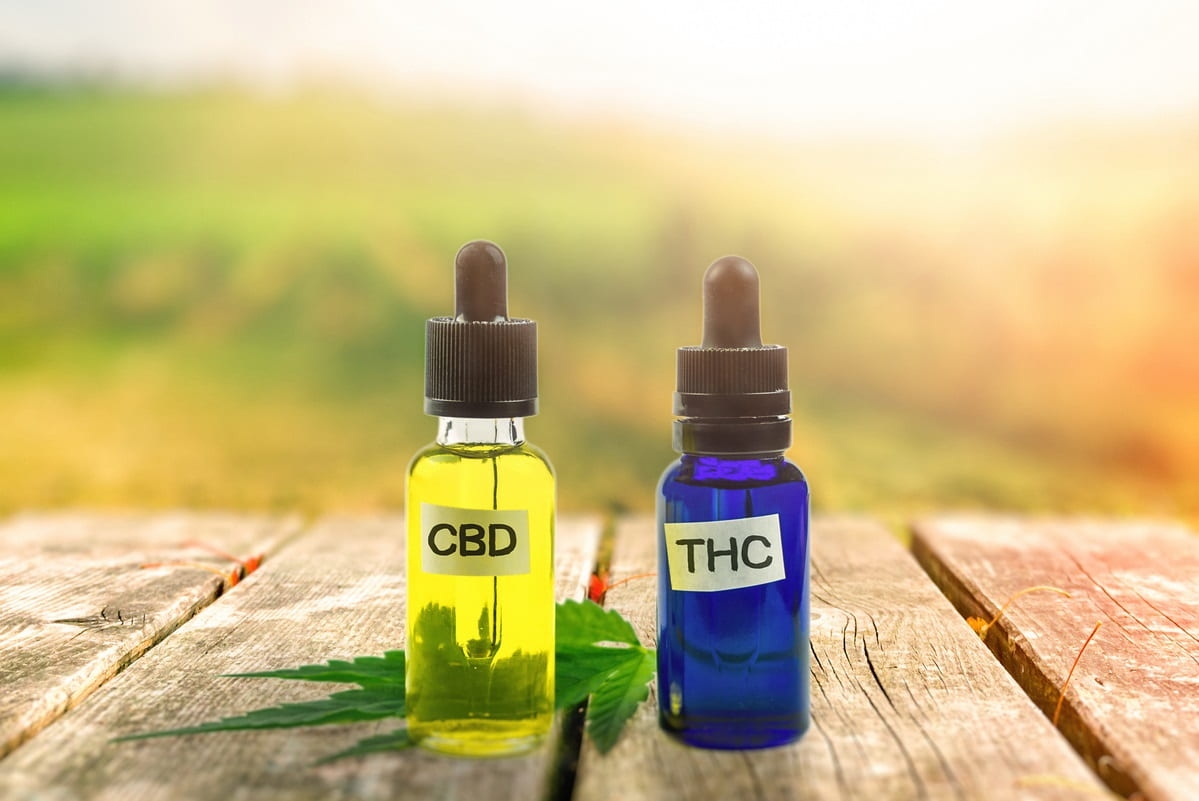
The distinction between CBD and THC cannabinoids is often summarized in the psychotropic effects of THC, unlike CBD.
But beyond this generalization, it should also be noted that the distinction between CBD and THC also lies in the fact that the interaction of each of these molecules with the receptors of the endocannabidiol system (SEC) is not the same.
In addition, the difference between these two main cannabis molecules can also be seen in the characteristic properties of each.
A difference in interaction with the nervous system
There is a similarity in the structure of CBD and THC molecules. When examining their chemical composition, we see that each has 21 carbon atoms, 30 hydrogen atoms and two oxygen atoms.
However, there is a difference in the arrangement of these atoms. It is in the position of one hydrogen atom. And this is precisely what justifies the difference between CBD and THC[18].
The endocannabidiol system functions in part, it should be remembered, through two receptors, CB1 and CB2. CB1 receptors are found in the brain and are responsible for mental and physiological processes.
CB2 receptors are found in the central nervous system and in the immune system. The THC molecule is distinguished by its interaction with CB1 receptors.[19] This explains why it is responsible for the high that is observed in cannabis users.
Like THC, CBD itself acts on the endocannabinoid system. However, this interaction takes place in a different way. CBD interacts with CB2 receptors and inhibits them only to a limited extent. It does, however, increase the levels of endocannabinoids such as anandamide, the molecule often referred to as the "happy molecule"[20].
20] This interaction, which is specific to each CBD or THC molecule, determines their properties.
The different properties of CBD
CBD is endowed with several properties that might surprise some people.
The anxiolytic and anti-inflammatory properties of CBD
Anxiety and pain influence the quality of life of those who suffer from them. This condition affects the immune system of the human body. An immediate reaction occurs which is called inflammation.
According to some studies, a chronic inflammatory reaction, under the action of intense pain such as that produced by back pain, rheumatism, arthritis, multiple sclerosis or cancer, can promote the development of tumors and even cancerous pain. It goes without saying that the structure of the organ concerned will be affected.
Faced with this, studies conducted in 2007 by researchers at the California Pacific Medical Center have produced some promising results following the use of CBD. It would therefore act as a powerful anti-inflammatory[21].
21] Moreover, CBD, while providing a feeling of well-being and relaxation, would help fight against stress and anxiety. Better still, it also has a long duration of action and does not induce any dependency, unlike opiates or painkillers[22].
Analgesic properties
The analgesic properties of CBD have also been studied by several research units[23].
We will mention those undertaken in the Scientific Research Laboratories of Israel, Spain and the United States specialising in pain phenomena. Their conclusion revealed the analgesic properties of CBD against pain[24].
Other studies have also supported CBD's analgesic properties[25]
Other properties of CBD
CBD also has several other properties. These include:
The different properties of THC
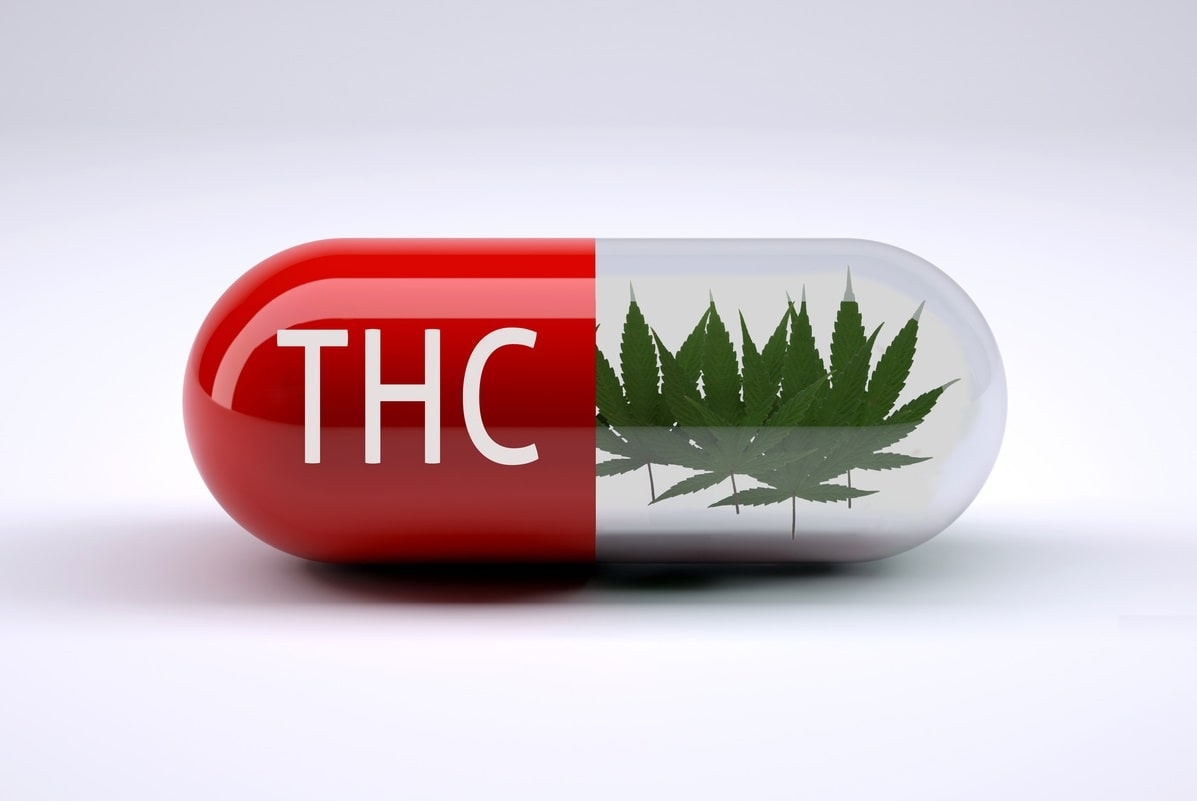
Cannabinoids CBD and THC certainly have an entourage effect. However, THC is also known to have some typical properties, sometimes to the exclusion of CBD. In spite of its psychotropic effects, THC is able to relieve patients of certain diseases or symptoms[29] such as
- Neuropathic pain
- Side effects of chemotherapy[30]
- Intraocular pressure due to glaucoma[31]
- Loss of appetite[32]
- Asthma
- Sleep apnea
- Parkinson's disease
CBD, THC: What does the law say?
The opposition between CBD and THC can also be seen in the legal status of each cannabinoid.
The approach of international institutions or foreign legislation
Several international institutions have in fact taken up the cause of CBD. By declassifying it from the list of narcotics, they make its use legal
The point of view of the World Health Organization (WHO)
In this regard, we can mention the World Health Organization (WHO), which removed CBD from the list of doping products in 2017. It has certainly suggested that research be intensified in order to reveal its therapeutic virtues[33].
CBD/THC: What do the UN and the International Anti-Doping Agency say?
As far as the UN is concerned, it should be noted that the UN convention on drugs does not mention CBD at all[34]. 34] This is all it takes to say that the UN body does not recognise the side effects of CBD, such as dependence or psychotropic effects.
The same is true of the International Anti-Doping Agency whose list of doping products does not also include CBD since January1, 2018.
CBD/THC: What does the Court of Justice of the European Union (CJEU) say
November 29, 2020 is an important date in the future legislation on CBD and THC, if only in the French legislative framework.
In a case called Kanavape[35], the EU legislator explicitly stated that, as CBD oil has no side effects such as dependence and psychotropic effects, the decision to prohibit its use or consumption is contrary to EU legislation.
In this decision, the judge argues that it is important to determine a legal threshold beyond which the consumption or use of CBD would be illegal.
CBD/THC: France's position
In the current state of drug legislation, France classifies THC as a real narcotic, unlike CBD.
However, it must be recognized from the outset that it is almost impossible to separate CBD entirely from THC during extraction techniques, so as to obtain a THC content of 0%.
As a result, France's position of only authorising CBD-based products when they contain 0% THC[36], has raised many questions and uncertainties.
However, this decision by the Community body will, without a shadow of a doubt, motivate a step forward in the legislation in favour of CBD/THC in France. This was the case, for example, with the position defended by the International Anti-Doping Agency, to downgrade CBD from narcotics. Through a decree No. 2018-1283 dated December 27, 2018, France has removed CBD from toxic substances as far as sports activities are concerned and well beyond.
Ultimately, as you may have noticed, CBD and THC share a common origin: The cannabis plant (hemp or marijuana). They have in common to act on the nervous systems, but this interaction is different, depending on whether it is CBD or THC.
This probably explains why THC produces high effects: Paranoia, anxiety, loss of control. As for the common features, it has been revealed that several studies show that these two cannabinoids are only really effective when used in combination: the entourage effect. However, studies have also tried to prove that there are typical properties of each molecule, such as the high induced by THC.
The biggest difference between CBD and THC is the legal aspect. CBD is indeed legal, unlike THC. However, it should be said that national and international legislation is becoming less and less rigid in favour of the legalization of cannabis or its therapeutic use.
1]https://www.futura-sciences.com/sante/breves/antalgique-cannabis-renferme-antidouleurs-30-fois-plus-puissants-aspirine-976/
2] https://www.futura-sciences.com/sante/definitions/biologie-terpenoide-4723/
3] https://www.futura-sciences.com/sante/definitions/nutrition-flavonoide-15856/
4] https://www.docteur-fitness.com/difference-entre-cbd-thc-et-les-principaux-cannabinoides
5] https://www.docteur-fitness.com/difference-entre-cbd-thc-et-les-principaux-cannabinoides
6] "Endocannabinoid-metabolising enzymes". British Journal of Pharmacology, vol. 158, no. Suppl 1, November 2009, pp. S220-21. PubMed Central, doi:10.1111/j.1476-5381.2009.00506_10.x.
[7] https://en.wikipedia.org/wiki/Entourage_effect
[8] https://www.sciencedirect.com/science/article/pii/S0885392409007878#; "Cannabidiol (CBD): A Situation Analysis", Frank Zobel, Luca Notari, Eva Schneider, Ocyna Rudmann, Research Report No. 97.
9] https://www.kalapa-clinic.com/fr/effet-entourage-cannabis-medicinal/
10] https://www.kalapa-clinic.com/fr/apres-10000-etudes-scientifiques-sur-le-cannabis-quels-sont-les-resultats/
11] Russo, E., & Guy, G. W. (2006). A tale of two cannabinoids: the therapeutic rationale for combining tetrahydrocannabinol and cannabidiol. Medical hypotheses, 66(2), 234-246; http://onlinelibrary.wiley.com/doi/10.1111/j.1476-5381.2011.01238.x/full
[12] https://www.kalapa-clinic.com/fr/effet-entourage-cannabis-medicinal/
[13] Russo, E. B. (2011). Taming THC: potential cannabis synergy and phytocannabinoid-terpenoid entourage effects. British journal of pharmacology, 163(7), 1344-1364 ;
Gallily, Ruth & Yekhtin, Zhannah & Hanus, Lumir. (2015). "Overcoming the Bell-Shaped Dose-Response of Cannabidiol by Using Cannabis Extract Enriched in Cannabidiol. " Pharmacology & Pharmacy. 06. 75-85. 10.4236/pp.2015.62010
[14 ] Single and Synergistic Effects of Cannabidiol and Δ-9-Tetrahydrocannabinol on Zebrafish Models of Neuro-Hyperactivity https://www.ncbi.nlm.nih.gov;
Multicenter, Double-Blind, Randomized, Placebo-Controlled, Parallel-Group Study of the Efficacy, Safety, and Tolerability of THC:CBD Extract and THC Extract in Patients with Intractable Cancer-Related Pain - ScienceDirect https://www.sciencedirect.com
15] https://www.futura-sciences.com/sante/actualites/medecine-cannabis-10-usages-therapeutiques-averes-etude-61144/
[16] https://www.syndicat-simples.org/la-production-et-lutilisation-du-chanvre-quel-cadre-juridique-en-france/
[17] https://fr.wikipedia.org/wiki/Cannabidiol;
https://www.futura-sciences.com/sante/questions-reponses/cannabis-vrai-faux-cinq-choses-savoir-cbd-14264/;
https://www.drogues.gouv.fr/actualites/cannabidiol-cbd-point-legislation
18] https://www.cscbrussels.be/blog/cbd-vs-thc-lequel-est-le-meilleur/
19] Reggio, Patricia H. "Endocannabinoid Binding to the Cannabinoid Receptors: What Is Known and What Remains Unknown. Current medicinal chemistry, vol. 17, no. 14, 2010, pp. 1468-86
20] https://www.royalqueenseeds.fr/blog-comment-le-cbd-contrecarre-le-thc-n377#ext_res-1
[21] https://www.lequotidiendumedecin.fr/archives/en-10-ans-les-prescriptions-dopiaces-antalgiques-pour-douleurs-non-cancereuses-ont-augmente-de-88; https://www.planetesante.ch/Magazine/Addictions/Drogues/La-dependance-aux-antidouleurs-passe-t-elle-l-Atlantique
[22]https://www.lequotidiendumedecin.fr/archives/en-10-ans-les-prescriptions-dopiaces-antalgiques-pour-douleurs-non-cancereuses-ont-augmente-de-88; https://www.planetesante.ch/Magazine/Addictions/Drogues/La-dependance-aux-antidouleurs-passe-t-elle-l-Atlantique
[23] Xiong, Wei, et al. "Cannabinoids suppress inflammatory and neuropathic pain by targeting α3 glycine receptors." Journal of Experimental Medicine 209.6 (2012): 1121-1134
[24] https://fr.timesofisrael.com/un-labo-israelien-dedie-a-la-validation-clinique-des-recherches-sur-le-cannabis/
[25 ] Studies by several pain researchers such as Boehnke, Amol Deshpande, MD and Angela Mailis; https://www.hexagonevert.fr/le-cbd-pour-soulager-la-douleur-ce-que-dit-la-science/
[26] https://www.alchimiaweb.com/blogfr/vitamines-antioxydants-fumee-cannabis/
[27] https://marieclaire.be/fr/sante-tout-sur-le-cbd/
28] Studies conducted by researchers at the Ontario Veterinary College, University of Guelph
[29] https://fr.wikipedia.org/wiki/T%C3%A9trahydrocannabinol
[30] https://fr.wikipedia.org/wiki/Chimioth%C3%A9rapie
[31] https://fr.wikipedia.org/wiki/Glaucome
[32] https://fr.wikipedia.org/wiki/App%C3%A9tit
[33] https://www.who.int/
[34] https://www.liberation.fr/france/2020/11/19/interdiction-du-cbd-en-france-camouflet-europeen-et-fumee-verte-pour-le-marche_1806070
[35 ] https://www.village-justice.com/articles/les-usages-chanvre-cannabidiol-lecture-jurisprudence-communautaire,37231.html
[36] https://www.liberation.fr/checknews/2019/07/04/cannabis-cbd-un-an-apres-ou-en-est-on_1737928

